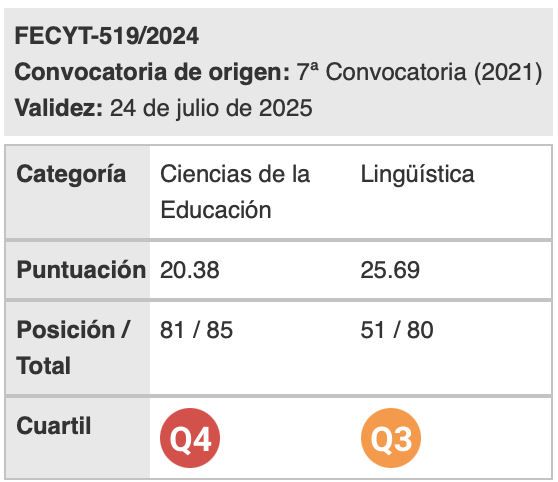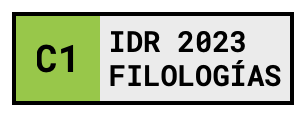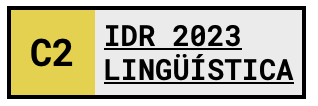Teaching and learning science in context
Palabras clave:
CLIL, bilingual education, ICT, motivationResumen
The aim of this study is the design of the teaching and learning process of science activities on the circulatory system. Due to the expansion of the EU and the diversity of languages in Europe, the European Commission has been promoting a multilingual and multicultural Europe. For this reason, there is a greater need for the development of communicative competence in Primary Education, and bilingual education is an ideal way to promote this goal.
Following CLIL approach, Content and Language Integrated Learning, English as a Second Language is used as a medium to teach subject matter content. CLIL consists of a variety of methods used to integrate content and language and it serves to develop knowledge of the subject as well as to improve students’ competency in English. Through innovative methods, it allows the recognition of meaning and the use of meaningful language in a particular context. Applying CLIL involved the preparation of specific materials for 49 Spanish students divided in two groups in year 6 of Primary Education in Spain.
The involvement of students in the learning process and their interaction is an essential aspect of this study. This involvement was even enhanced by means
of the use of ICT (Information and Communication Technologies) in the classroom and by the students’ active participation in the activities carried out along the process, which fostered motivation, a relaxed setting, teamwork and collaboration in a meaningful context. The materials and suggestions presented here also aim to be a support for bilingual teachers by providing a selection of activities and educational resources for their professional development.
Descargas
Citas
Cummins, J. (1984). Bilingualism and special education: Issues in assessment and pedagogy. Clevedon: Multilingual Matters.
Hymes, D. H. (1972). “On communicative competence”. In J. B. Pride and J. Holmes (Eds.), Sociolinguistics. Selected Readings. Harmondsworth: Penguin.
Krashen, S. D. (1981). Principles and practice in second language acquisition. English language teaching series. London: Prentice-Hall International.
Marsh, D. (1994). Bilingual education & content and language integrated learning. International association for cross-cultural communication, language teaching in themember states of the European Union (Lingua). Paris: University of Sorbonne.
Marsh, D. and G. Langé (Eds.) (2000). Using languages to learn and learning to use languages. Finland: University of Jyväskylä.
MEC (2006). “Orientaciones para el desarrollo del currículo integrado hispano-británico en educación primaria. Convenio M.E.C./British Council”. Madrid: Secretaría General Técnica. Centro de publicaciones del Ministerio de Educación y Ciencia.
Navés, T. and C. Muñoz (1999). “CLIL experiencies in Spain”. In Marsh, D and G. Langé (Eds.), Implementing content and language integrated learning. Finland: Jyväskylä.
Navés, T. and C. Muñoz (2000). “Usar las lenguas para aprender y aprender a usar las lenguas extranjeras. Una introducción a AICLE para madres, padres y jóvenes”. In Marsh, D. and G. Langé (Eds.), Using Languages to Learn and Learning to Use Languages. Finland: UniCOM, University of Jyväskylä on behalf of TIE-CLIL. Available on http://www.ub.es/filoan/CLIL/padres.pdf (accessed on April 20, 2013).
Nunan, D. (1988). The learner-centred curriculum. Cambridge: Cambridge University Press.
Sanmartí, N. (2007). “Hablar, leer y escribir para aprender ciencia”. In La competencia en comunicación lingüística en las áreas del currículo. Aulas de Verano. MEC.
Descargas
Publicado
Cómo citar
Número
Sección
Licencia
Aquellos autores/as que tengan publicaciones con esta revista, aceptan los términos siguientes:
- Los autores/as conservarán sus derechos de autor y garantizarán a la revista el derecho de primera publicación de su obra, el cuál estará simultáneamente sujeto a la Licencia de reconocimiento de Creative Commons que permite a terceros compartir la obra siempre que se indique su autor y su primera publicación esta revista.
- Los autores/as podrán adoptar otros acuerdos de licencia no exclusiva de distribución de la versión de la obra publicada (p. ej.: depositarla en un archivo telemático institucional o publicarla en un volumen monográfico) siempre que se indique la publicación inicial en esta revista.
- Se permite y recomienda a los autores/as difundir su obra a través de Internet (p. ej.: en archivos telemáticos institucionales o en su página web) antes y durante el proceso de envío, lo cual puede producir intercambios interesantes y aumentar las citas de la obra publicada. (Véase El efecto del acceso abierto).

Revista de Lenguas para fines específicos is licensed under a Creative Commons Reconocimiento-NoComercial-SinObraDerivada 4.0 Internacional License.






















